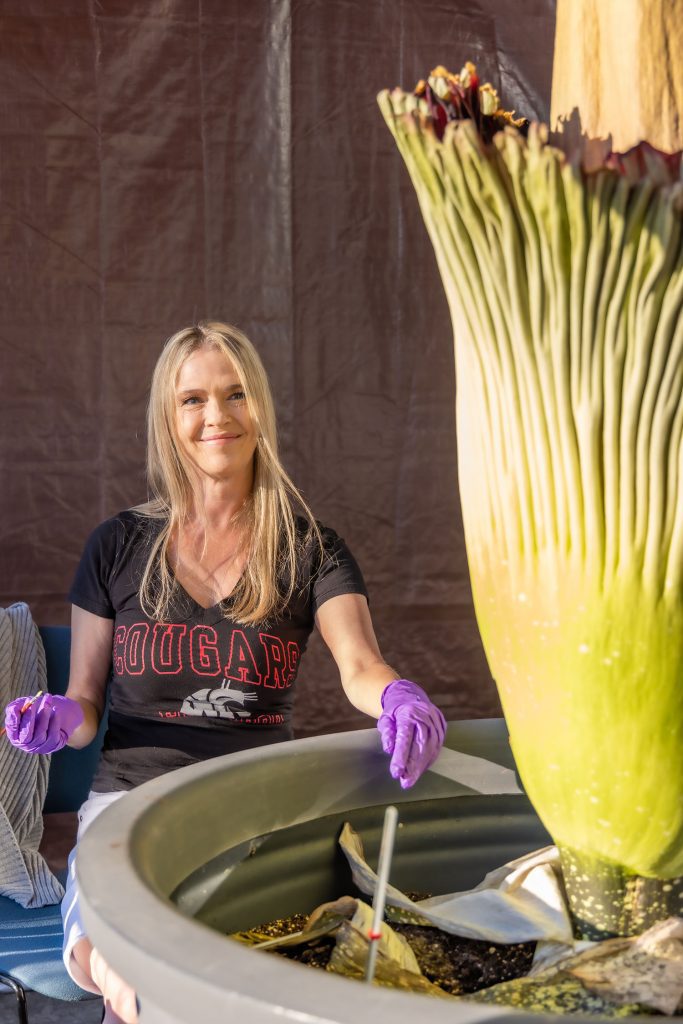Care of huge flower elicits great responsibility
2-minute read
Dawn Freeman ’00 is the new head caretaker of WSU Vancouver’s ultra-rare corpse flower
Dawn Freeman ’00, a science lab technician at Washington State University Vancouver, was handed the reins as chief caretaker of the institution’s famed corpse flower.

Dawn Freeman ’00 with the corpse flower. Photo by Dawn Freeman and Washington State University Vancouver
Caring for this plant is nothing like watering a neighbor’s houseplants while they’re on vacation.
The rare plant, which emits a strong, foul odor when it blooms, is known locally as Titan VanCoug and is one of fewer than 1,000 corpse flowers in the world.
Freeman took on the responsibility following the retirement of WSUV science professor Steve Sylvester, who started the plant from seed in 2002. It first bloomed in 2019 following 17 years of anticipation. It bloomed again in August 2022. Each bloom lasts 24 to 48 hours.
While the plant is blooming, it gets rolled out for public viewing. This year’s bloom was livestreamed on the internet and drew long lines of botanophiles eager to see and smell the flower in person. At 69 inches tall, the flower was bigger and stinkier than the previous one.
Freeman assisted in pollinating the plant during the brief bloom. If successful, that pollination will lead to ripening fruits with viable seeds.
“We would send those seeds to other universities, botanical gardens and conservatories who want to cultivate the plant,” Freeman said in an email exchange with Clark College Foundation.
Life cycle
The plant’s life cycle helps explain why it’s so rare. It starts from seed, slowly. When a viable seed is ready, it produces one leaf that eventually dies back. After a period of dormancy, another, larger leaf sprouts. Then it dies back.
“That cycle will continue until the seed has gained enough nutrients that has turned into a large corm,” Freeman said.
A corm is a fleshy underground stem, similar to a bulb, that stores food for a plant.
“When the corm can sustain it, it will produce a bloom instead of a leaf. It takes about 10 years for the seed to develop into a corm big enough to support the huge bloom.”

Dawn Freeman ’00 speaks with onlookers during the August corpse flower bloom. The flower is known locally as Titan VanCoug. Photo by Dawn Freeman and Washington State University Vancouver
Titan VanCoug has four corms—the result of an overwatering accident years ago. Freeman said that mishap set back the plant’s bloom cycle about 10 years. But it resulted in additional corms.
“Once a corm has produced its first bloom, it usually takes 4 to 6 years for it to gain enough strength to throw up another one,” Freeman said.
Because the plant has four corms, it could get into a cycle of blooming about once every two years, Freeman said, which would give onlookers more chances to view the phenomenon.
Written by Lily Raff McCaulou



